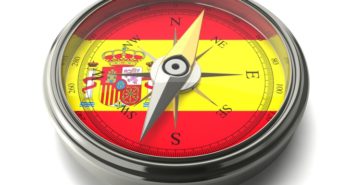- Spaniards go to the polls on Sunday and polls show a divided country.
- The various political scenarios may take time to materialize.
- EUR/USD may enjoy the results, but it will take time.
Citizens of the fourth-largest economy in the euro-zone vote in general elections on Sunday, April 28th. Voting ends at 18:00 GMT. Exit polls will be published at that time, with final results due around 22:00 GMT, just after markets open.
Spain has had its share of troubles in the euro-zone crisis. Unemployment reached 27% and its banks received a rescue. In the peak of the crisis in 2012, ECB President ECB was thinking about Spain and Italy when he made the famous “whatever it takes” speech. The OMT program, never used, was designed for these countries.
Since then, the country saw several years of growth above 3%, the jobless rate dropped to 14.1% but the ramifications of the economic crisis, as well as the political crisis around Catalonia that reached a peak in late 2017, are still felt.
Spain has been one of the more europhile countries in the euro-zone but it is not prone to anti-establishment sentiment. The hard-left Podemos party has been critical of the European Union’s policy and has been around since 2014. The new ultra-right Vox party is outright eurosceptic, in line with the Visegrad group that includes Poland, Hungary, the Czech Republic, and Slovakia.
Fragmented political scene
Spain used to see power swing between the center-left PSOE socialists, led by PM Pedro Sánchez, and the center-right PP, led by opposition leader Pablo Casado- The scene became fragmented by the entry of Podemos, led by Pablo Iglesias, and Ciudadanos, a new center-right party led by Albert Rivera, which is economically liberal but has a tough nationalistic stance on Catalonia.
To complicate matters, even more, the national 350-strong parliament, known as Congreso, is home to several regional parties from Catalonia, the Basque Country, and others.
The latest opinion polls show the PSOE easily in the lead but far from a majority. They also show a tie between the right-wing PP-Ciudadanos-Vox bloc and the left-wing PSOE-Podemos bloc, with the smaller parties holding the balance of power. However, the same polls vary quite a bit and show that many Spaniards are undecided, less than one week to go.
The fragmentation and indecision open the door to quite a few possibilities:
1) Centrist PSOE-Ciudadanos government
A centrist PSOE-Ciudadanos coalition has been ruled out by Rivera, but the parties tried to form a government beforehand. Such an option is what businesses want and may push to. However, both parties need to have a majority for this option to be able to materialize. In addition, it will take for Ciudadanos to climb down the tree of their pre-election promises.
With enough pressure from big business, Spain may find itself with a business-friendly government within several months and this outcome is positive for EUR/USD.
Probability: Medium-High
EUR/USD effect: Positive in the long-term.
2) Left-wing PSOE-Podemos coalition
Such a coalition would also take time to negotiate, not only between the two coalition partners but also with the small regional parties. It is not the preferred choice of markets, but a large majority of the PSOE in the government and the recent positive track record of the government led by Sánchez may sooth fears.
All in all, it could weigh on the common currency, but only for a short while.
Probability: Medium-High
EUR/USD effect: Negative short term, OK afterward.
3) Rightwing PP-Ciudadanos-Vox government
A government led by the market-friendly PP and Ciudadanos and perhaps supported from the outside by Vox will also be considered market friendly and could have an immediate positive effect on the euro.
However, if more moderate parties do not command a majority, their reliance on Vox could lead them to some anti-euro sentiment, thus limiting the gains.
All in all, this scenario could have immediate positive effects on the euro, with issues down the road.
Probability: Medium
EUR/USD effect: Positive in the short-term, complicated later
4) Hung parliament
The current composition of parliament is the result of the June 26th elections that came after elections in December 2015 left a hung parliament. The country did not have a government for ten months, but the economy did very well during this time.
If negotiations between the parties go nowhere, Spaniards could return to the polls later this year, after the municipal and European Parliament elections in late May.
The mix of voter fatigue and uncertainty may weigh on markets in the short term, but the economic data will later have its say.
Probability: Medium-Low, the parties will eventually find a way.
EUR/USD effect: Negative in the short-term
5) Absolute majority for the PSOE
Incumbent PM Sánchez may be seen as a sign of stability for many Spaniards wary of the right-wing’s drive to the hard right and the soft approach by Podemos on Catalonia. They may go for the centrist option and could hand an outright majority for the PSOE.
The high number of undecideds and the electoral system that favors large parties could turn the largest party to a party holding 176 seats or more in the chamber.
In this case, the mix of pro-European policy and political stability would be an immediate and long-term win for the common currency.
Probability: Low
EUR/USD: Decidedly positive
Conclusion
Spain’s general elections will be closely watched across the old continent and will impact EUR/USD at the wake of the Asian session. The fragmented political system complicates the reaction in both the short and the long terms, but a euro-positive output is more likely than not.
Get the 5 most predictable currency pairs
